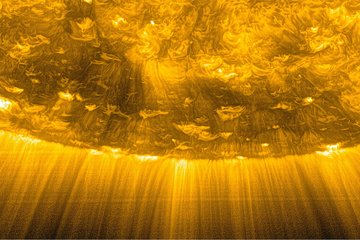All genres
1.
Journal Article
A comparative study of iron abundance estimation methods: Application to the western nearside of the Moon. Icarus 248, pp. 72 - 88 (2015)
2.
Journal Article
Characterization of lunar soils through spectral features extraction in the NIR. Advances in Space Research 54 (10), pp. 2029 - 2040 (2014)
3.
Journal Article
Integrated topographic, photometric and spectral analysis of the lunar surface: Application to impact melt flows and ponds. Icarus 235, pp. 86 - 122 (2014)
4.
Journal Article
From the Imbrium Basin to crater Tycho: The first regional spectral distribution map derived from SIR-2 near-infrared data. Icarus 223, pp. 804 - 818 (2013)
5.
Journal Article
Corrigendum to ``Delivery of dark material to Vesta via carbonaceous chondritic impacts'' [Icarus 221, pg 544, 2012]. Icarus 223 (1), p. 632 - 632 (2013)
6.
Journal Article
Lunar iron abundance determination using the 2-μm absorption band parameters. Icarus 220 (1), pp. 51 - 64 (2012)
7.
Journal Article
An in-depth look at the lunar crater Copernicus: Exposed mineralogy by high-resolution near-infrared spectroscopy. Icarus 213, pp. 43 - 63 (2011)
8.
Conference Paper
A near-infrared reflectance survey across lunar crater Aristoteles. In: Proceedings of the 42nd Lunar and Planetary Science Conference. (2011)
9.
Conference Paper
NIR spectral investigation of the Delisle/Diophantus crater region by the SIR-2 instrument. In: Proceedings of the 42nd Lunar and Planetary Science Conference. (2011)
10.
Thesis - PhD
Mineralogical analysis and iron abundance estimation of the Moon using the SIR-2 and other VIS-NIR spectrometers on-board the lunar orbiter Chandrayaan-1. Dissertation, Technische Universität Clausthal (2012)










